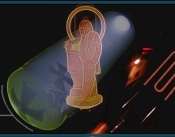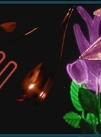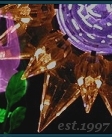Happy New Year, Chris!
Owing the fact that Tim's server have been temporarily out of service, here are those info about you asked me.
It?s too difficult try to explain you these things being a bit less technical, but lets go ahead!
First at all I would need to know what a kind of task are you thinking about: contact reproduction onto copper
daguerreotype plates from inter-positive film "clises" taken in the usual way or instead the direct exposure of
the copper plate using a genuine big size camera to take the picture of a real subject (like a portrait).
In the first case, a simple "insolating" press or reproduction device fitted with a single HPR-125W, mounted at
rough 75cm,(plus or minus 29 to 30") over the glass of the press, could give you a reasonably useful service
without excessive long exposure times.
But in the other hand, if you are planning to lighting a real subject (anyone that "patiently" would wait
absolutely still during several minutes (a sort of "cobaya" or "Guinea pig"

), you will need some more power, let's say 2 x 400 watts to begin, using simple and cheap aluminium reflectors.
Clear HPM lamps are not too easy-to-find nowadays, at least here in Europe (I bought a hugue quantity of them, 80 and 125 watts rated, in last year and I did must order them from Australia via a Spanish dealer) but for
these power ranges (400 w and more) perhaps could be easier to get them, owing to the fact that this kind of
bulbs are still in use for graphic arts reproduction machines and "insolators" for making printed circuit
boards.
I must say you that I haven't any kind of practical experience about making daguerreotypes, but according those I've studied, I do realize that such a primitive photographic processes were known as being too less sensitive, so they needed very long time exposures even at direct Sunlight to get a useful image with enough density and contrast.
In any case, you must acquire enough experience to get the exact exposure combination of time Vs. lens aperture to obtain well exposed plates and a reasonably wide field depth, by making some tests.
BTW, the daguerreotype process are known as being a slightly hazardous process, due to the fact that mercury
vapour (not precisely these within the lamp's discharge tubes

) are involved in development process itself,
so, please be careful to avoid any intoxication when working with such plates.
Also you must to weight up the advantages or misadvantages of needing to buy new ballasts as well as new mercury lamps.
Please, let us to see and enjoy some samples of your daguerreotypes when you will get them. Thanks.
Sucess and best regards.
M. Gonz?lez.











